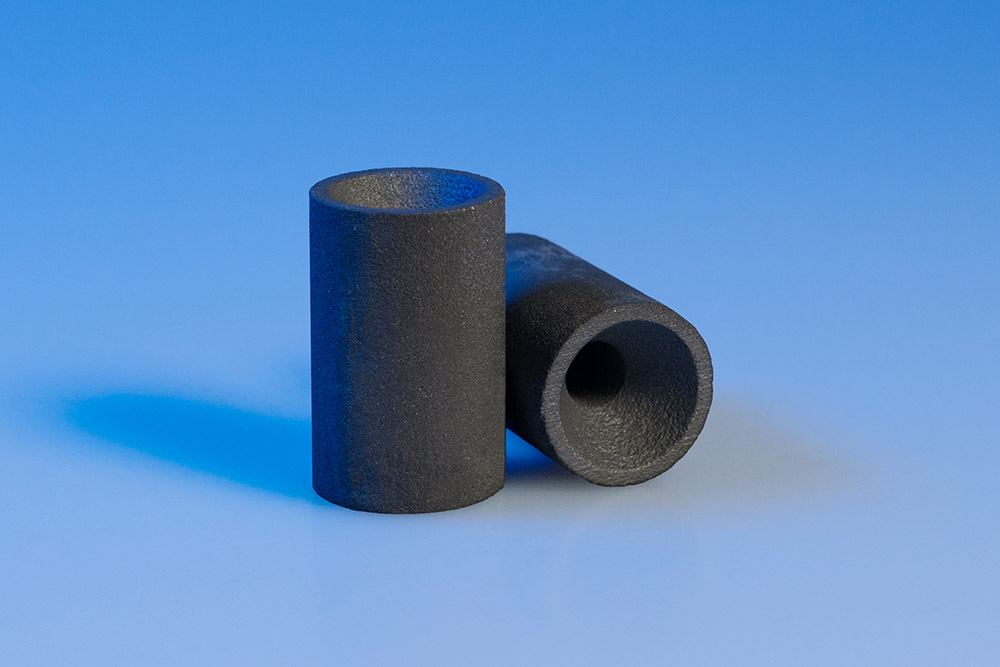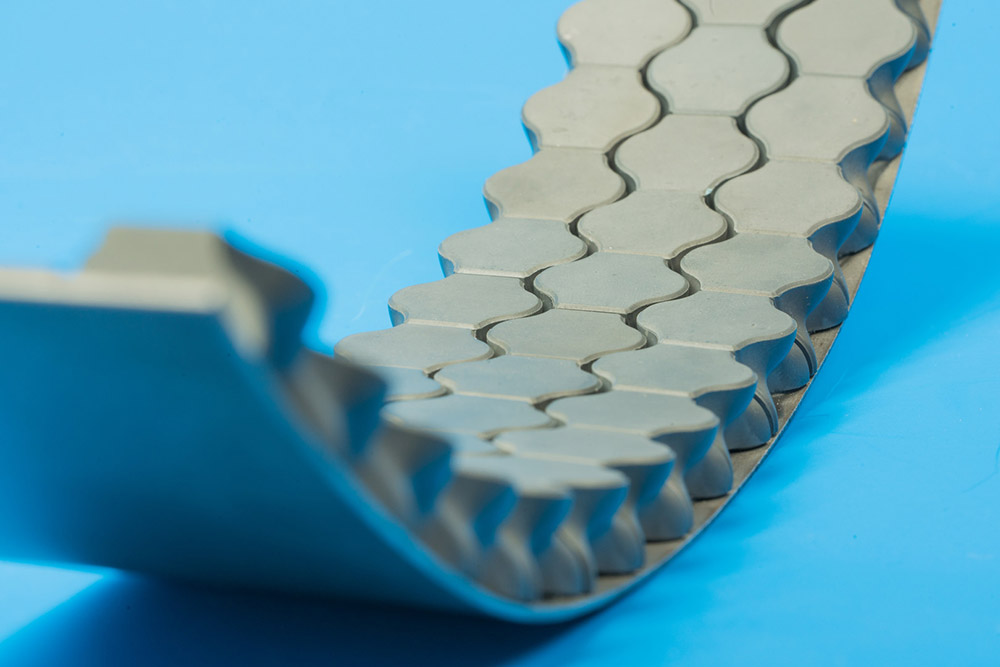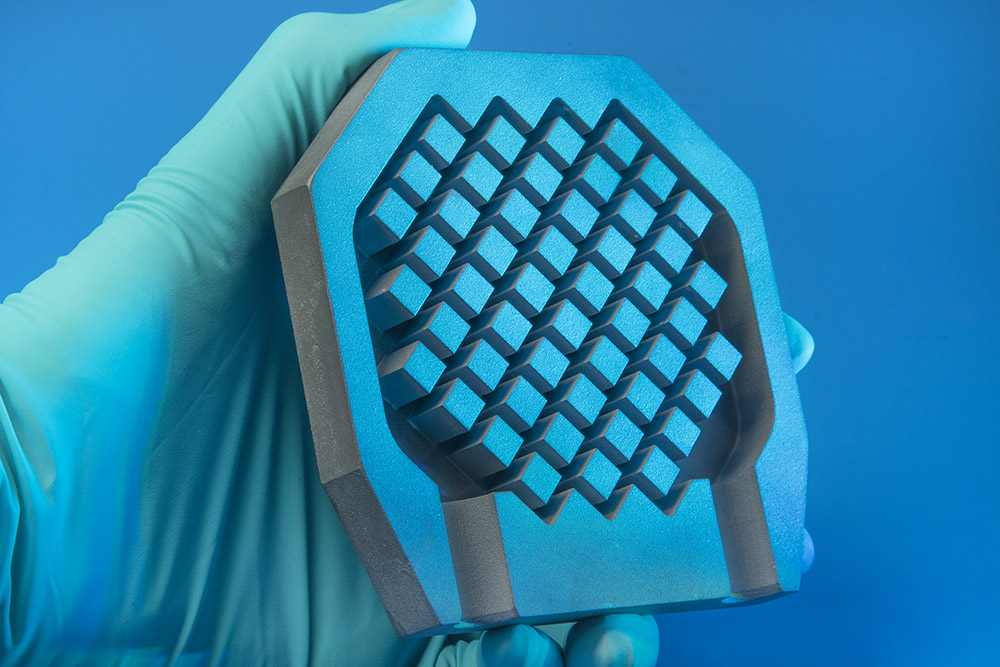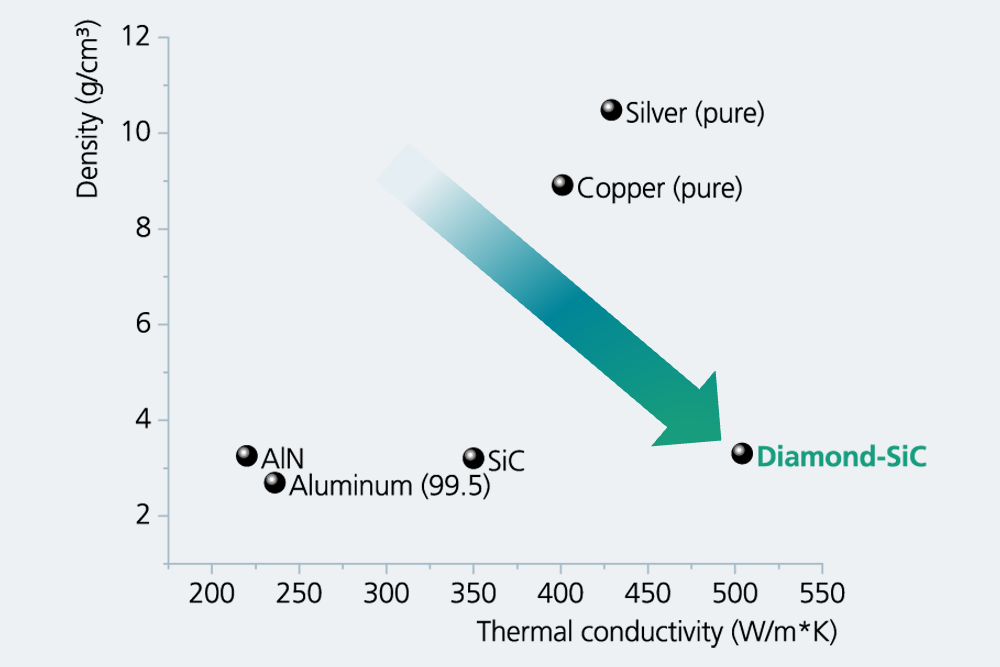SiC-bonded diamond materials can also be used as a substrate in high-end power electronics, where extreme power dissipation occurs in the smallest of spaces at elevated temperatures or where a high degree of functional compression and miniaturization is required with the same performance. They are also interesting for power converters with direct cooling. Due to the very good corrosion resistance of SiC-bonded diamond materials, converter components can be structured and brought into direct contact with coolants.
Production process
At the beginning of the production process, diamond powder is mixed with the appropriate binders and solvents and granulated. The mixture is then pressed or converted into a molded body using other shaping technologies. During the subsequent pyrolysis in an inert atmosphere, parts of the binder are converted into carbon, so that the molded body now consists of diamond and carbon. This porous molded body is then infiltrated with liquid silicon at 1450 to 1600 °C. During infiltration, the silicon reacts with the carbon and partly with the diamond grains. In the resulting structure, the diamond grains are firmly embedded in a three-dimensional SiC lattice. There is a direct chemical bond between the diamond and the SiC. Depending on the diamond powder used, different microstructures can be produced and thus properties can be specifically modified. So far, diamond contents of up to 60 % by volume and residual silicon contents of less than 5 % have been achieved. The diamond ceramics therefore exhibit outstanding mechanical and corrosive stability.
Components can be produced both as compact components and as SiC components with 300 to 500 µm thick layers in highly stressed areas. As the green parts can be green-machined after pyrolysis and the volume change during silicon infiltration is almost zero, diamond ceramic components can be produced in a wide variety of geometries – including complex geometries – close to the final shape and therefore very cost-efficiently. Due to the high wear resistance of diamond ceramics, finishing by cutting or grinding is limited. Finishing by lapping or polishing the surface is possible, but time-consuming. Laser cutting and electrical discharge machining (EDM), on the other hand, are attractive alternatives for machining diamond ceramics.








